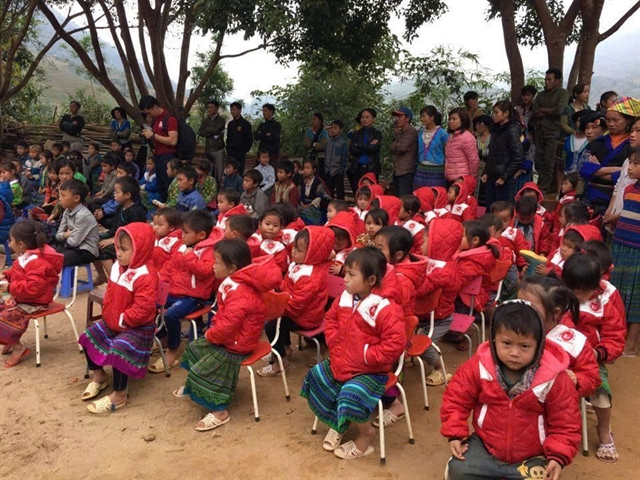 Society
Society

.jpg)
|
| Students of the Hà Huy Tập Secondary School in Vinh City, the central province of Nghệ An attend the new school year ceremony 2020-2021/ VNA/VNS Photo |
HÀ NỘI — A new report by the World Bank Group pointed out that between 2010 and 2020, the Human Capital Index for Việt Nam increased from 0.66 to 0.69.
This means a child born in Việt Nam today will be 69 per cent as productive when they grow up as they could have been if they enjoyed complete education and full health.
This is higher than the average for East Asia and Pacific region, as well as for lower-middle-income countries.
The index’s components include the probability of survival to age five, expected years of school, harmonised test scores, learning-adjusted years of school, adult survival rate and healthy growth (not stunted rate).
A breakdown of the index shows 98 out of 100 children born in Việt Nam survive to age five and 25 out of 100 children are stunted.
In Việt Nam, a child who starts school at age four can expect to complete 12.9 years of school by age 18, but once what children actually learn is factored in, expected years of school reduces to only 10.7 years.
According to the report, Việt Nam’s Human Capital Index continues to be higher than the average for countries of the same income level despite the level of public spending on health, education and social assistance being lower than that of its peers.
However, further index improvements are hindered by remaining challenges, such as the relatively high rate of stunting (25 out of 100 children are stunted, especially among ethnic minorities).
The World Bank Group’s 2020 Human Capital Index (HCI) includes health and education data for 174 countries – covering 98 per cent of the world’s population – up to March 2020, providing a pre-pandemic baseline on the health and education of children.
The analysis shows that pre-pandemic, most countries had made steady progress in building the human capital of children, with the biggest strides made in low-income countries.
Despite this progress, and even before the effects of the pandemic, a child born in a typical country could expect to achieve just 56 per cent of their potential human capital.
The HCI, first launched in 2018, measures the amount of human capital a child born today can expect to attain by age 18.
It conveys the productivity of the next generation of workers compared to a benchmark of complete education and full health.
Worldwide a child born in 2020 can expect, on average, to be 56 per cent as productive as they could be when grown up. All data represent the status of countries pre-COVID-19.
The World Bank Group analysis found that the COVID-19 pandemic threatens hard-won gains in health and education over the past decade, especially in the poorest countries.
Investments in human capital are key to unlocking a child’s potential and improving economic growth in every country.
The World Bank Group President David Malpass said: "The pandemic puts at risk the decade's progress in building human capital, including the improvements in health, survival rates, school enrollment, and reduced stunting.
"The economic impact of the pandemic has been particularly deep for women and for the most disadvantaged families, leaving many vulnerable to food insecurity and poverty."
He added that protecting and investing in people was vital as countries work to lay a foundation for sustainable, inclusive recoveries and growth.
Due to the pandemic’s impact, most children – more than 1 billion – have been out of school and could lose out, on average, half a year of schooling, adjusted for learning, translating into considerable monetary losses.
Data also shows significant disruptions to essential health services for women and children, with many children missing out on crucial vaccinations.
The analysis finds human capital outcomes for girls are on average higher than for boys.
However, this has not translated into comparable opportunities to use human capital in the labour market as on average, employment rates are 20 percentage points lower for women than for men, with a wider gap in many countries and regions.
The pandemic is also exacerbating risks of gender-based violence, child marriage and adolescent pregnancy, all of which reduce opportunities for women and girls.
To protect and extend earlier human capital gains, countries need to expand health service coverage and quality among marginalised communities, boost learning outcomes together with school enrollments and support vulnerable families with social protection measures adapted to the COVID-19 crisis, the World Bank Group recommended. — VNS




